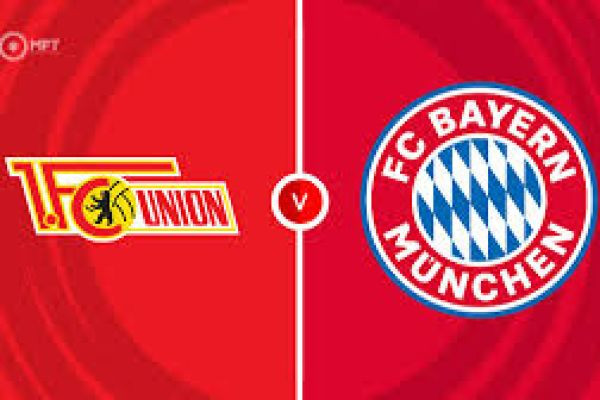The fixture between 1. FC Union Berlin and FC Bayern Munich is a pure distillation of the tactical tension that defines the modern Bundesliga. It is a battle of cultural identity as much as it is a contest of footballing quality: the industrial resilience of East Berlin versus the polished, dominant efficiency of Bavarian royalty. Bayern's mission is to execute their high-pressing, positional dominance; Union's goal is to turn the match into a physical, chaotic grind where their underdog spirit and tactical discipline can overcome the $6$ -time European champions.
Union Berlin: The Defiant Low Block and Set-Piece Threat
Union Berlin’s identity is founded on maximum effort, defensive rigidity, and a profound connection with the Alte Försterei faithful. Tactically, they operate almost exclusively in a compact $3-5-2$ formation that quickly collapses into a deep $5-3-2$ low block out of possession. Their blueprint against Bayern is clear: deny central spaces, absorb pressure, and punish mistakes.
Union's Strategic Mandate:
Central Congestion: The primary goal is to suffocate the half-spaces, preventing Bayern’s creative midfielders (like Jamal Musiala and Thomas Müller) from receiving the ball between the lines. The midfield three must work tirelessly to shield the back five, forcing Bayern's possession out wide.
Vertical Transitions: Union is happy to surrender possession, but their turnover is almost always vertical and direct. A long, accurate ball over the top to a pacey striker is their most reliable method of bypassing Bayern's aggressive press and exploiting the large space behind the Bavarian center-backs.
The Set-Piece Weapon: Corners and wide free-kicks are not just chances; they are Union’s main offensive currency. Their superior height and organization make them one of the league’s most dangerous teams from dead-ball situations, often proving the decisive factor when open play fails.
Union’s biggest risk is the potential for their highly disciplined structure to be broken by a moment of sustained technical brilliance, or for fatigue to set in, causing a crucial lapse in concentration late in the game.
Bayern Munich: Positional Dominance and Relentless Pressing
Bayern Munich approaches every Bundesliga fixture with the expectation of total domination. They deploy a dynamic $4-2-3-1$ formation, emphasizing territorial control, high vertical speed, and the immediate recovery of the ball.
Bayern's Strategic Pillars:
Positional Play and Width: The team systematically stretches the opponent, utilizing their full-backs (Alphonso Davies/Joshua Kimmich) to provide maximum width and volume in the final third. This creates space in the central channels for the number $10$ and central midfielders to attack the box.
The Counter-Press (Gegenpressing): Upon losing the ball, Bayern’s immediate reaction is a swarm of bodies around the ball carrier, designed to win possession back within seconds. This relentless high pressure is essential to prevent Union from launching their dangerous vertical counters.
The Central Finisher: The presence of an elite number $9$ (like Harry Kane) is crucial. Against a deep $5$-man defense, Kane must not only be clinical but also drop deep to link play, drawing a center-back out of position and opening space for the wingers (Leroy Sané/Kingsley Coman) to run into.
Bayern’s vulnerability lies in the vast space behind their high defensive line, particularly when their attack is neutralized by Union's low block and a careless turnover occurs in midfield.
Key Decisive Tactical Conflicts
The outcome of this colossal clash will hinge on three specific strategic battles:
The Harry Kane vs. Union Back Three Duel: Kane's ability to find space, both dropping deep and attacking the penalty spot, will be the ultimate test of Union’s central defenders. If they hold their line and pass him onto the defensive midfielder, they win the duel. If Kane pulls a center-back out, Bayern creates the required gaps.
The Kimmich/Goretzka vs. Union Midfield Screen: Bayern's central pivot must maintain composure and rhythm against Union’s intense screening. If Union’s midfielders successfully deny the technical players time on the ball, Bayern's attack can stall. If Kimmich or Goretzka can execute rapid, diagonal switches of play, they can bypass the congestion and isolate Union's wing-backs.
The Transition Escape: The most high-stakes moments occur when Union wins the ball deep. Can they resist the Bayern counter-press and successfully launch a long ball to turn defense into a dangerous attack, or will the pressure force an immediate turnover, putting the ball back at Bayern's feet?
Conclusion
This match is a classic example of Aesthetic Quality vs. Tactical Willpower. Bayern Munich is the clear favorite due to superior individual talent and the proven dominance of their system. They are expected to command $70\%$ or more of the possession. However, Union Berlin's disciplined $5-3-2$ is purpose-built to frustrate and neutralize precisely this type of opponent. The result is rarely a comfortable Bayern victory; more often, it is a narrow win (a $\text{1-0}$ or $\text{2-1}$ scoreline) decided by a moment of individual genius from Kane or Musiala, or a single goal-line scramble where the quality finally breaks the resistance. Union’s best hope lies in an early set-piece goal and an immaculate defensive performance.








